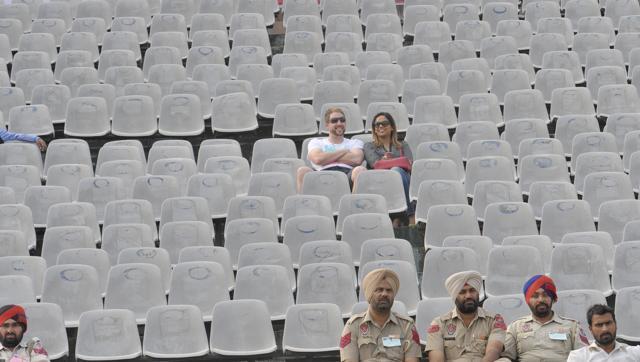Giving test cricket some context
2Are storm clouds clearing at the ICC in this post Death-of-a-Gentleman world?
There are encouraging signs coming out of Dubai, and while it would be premature for cricket fans around the world to think their governing body might be actually doing the right things, there is some hope out there.
Shashank Manohar is the new ICC Governor, replacing the risible N. Srinivasan. While heaping praise on an Indian cricket power-broker should be made cautiously, the early signs are positive. He is certainly sending out the right noises to the wider cricket community.
Of most interest, and any story signalling bad news for Giles Clarke is always worth a read, is the increasing likelihood of a Test Championship. This, at first glance, would appear a way of formalising the current ICC Rankings, so they actually mean something. According to the drum-beats, it would actually involve two divisions, with a 7-5 split, to be conducted over a three year window.
Observant readers will note that is an increase from 10 to 12 of nations with test playing status.
A concept that awards points for each test match has a lot of merit. Not only does it add relevance when a test series might otherwise be dead; it also carries context for those teams and fans not directly involved.
More importantly, it indicates the Future Tours Programme might be more than mere lip service. If you wrap a championship around something it requires some fairness, after all.
Complex? Certainly – a classic case of traditionalism meets modernism. There’s no easy answer for test cricket. It’s like re-designing an aircraft mid-flight, while retaining some of the parts (The Ashes etc) that have been there for more than 120 years.
But, refreshingly, the commitment seems to be there. The rules around promotion-relegation are going to be fun, and no word yet on the crossover of divisional competition. Having said that, with only a dozen teams involved, you’d think everyone would have the chance to play everyone. For example Bangladesh will still tour New Zealand this summer, and will continue to do so.
The upshot would be that test cricket would become a shade less archaic, in that it would no longer be one of the few sporting contests remaining without a league table providing context in the background. The casual sports follower in 2016 expects a league table, otherwise there is no obvious point to it all.
Think football. England v Moldova in a so-called “friendly” is nothing more than a contested training run. As a World Cup qualifier? Suddenly it becomes very important.
Broadcasting partners are well aware of this too, and it is likely that a fair bit of pressure for this is coming from them. For example, a Pakistan v Sri Lanka test series suddenly becomes very relevant to the New Zealand viewer. The vast spaces of emptiness during last year’s series between India and South Africa said a lot.
It is still early days, and there will be many more eggshells to walk over, but it is worth keeping an eye on this one.
A random table.
| 24 February 2016 | |||
| Team | Matches | Points | Rating |
| Australia | 43 | 4823 | 112 |
| India | 32 | 3535 | 110 |
| South Africa | 34 | 3703 | 109 |
| Pakistan | 28 | 2977 | 106 |
| England | 45 | 4610 | 102 |
| New Zealand | 39 | 3755 | 96 |
| Sri Lanka | 35 | 3123 | 89 |
| West Indies | 33 | 2504 | 76 |
| Bangladesh | 22 | 1026 | 47 |
| Zimbabwe | 10 | 53 | 5 |


[…] now have a new pair of innovations on the ICC desk in Dubai; the test ladder, and the concept of moving to playing four day […]
With all the talk of 4-Day test, I think I would rather have a Three test series of 4 day tests rather than two five day tests (which seems to be the new norm). 10 days v 12 overall….